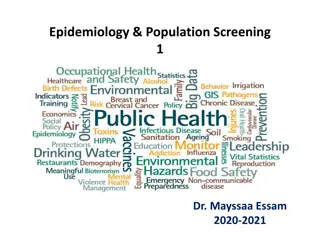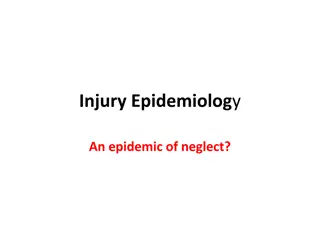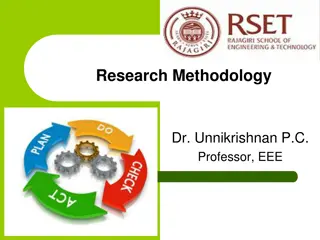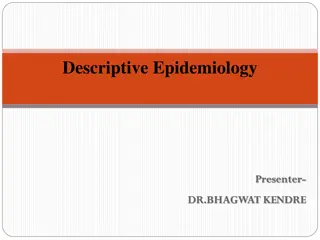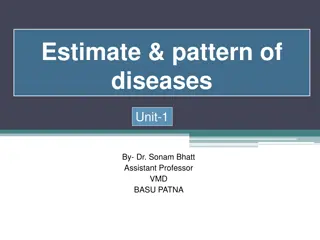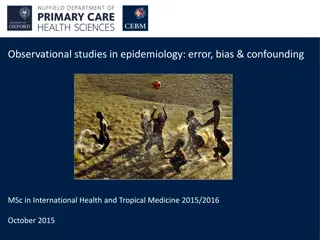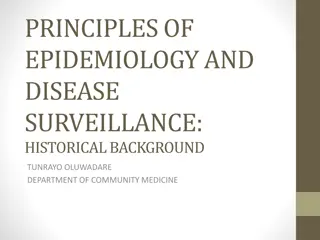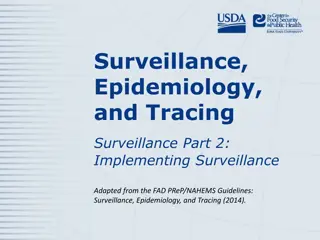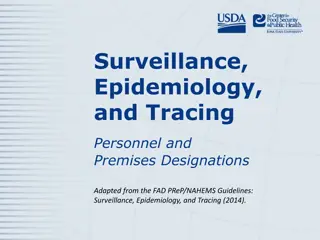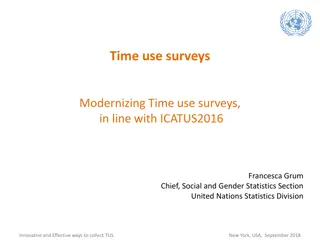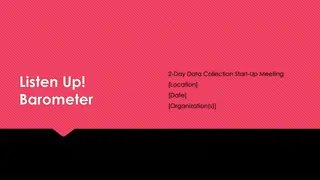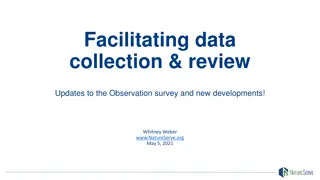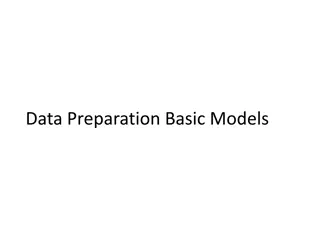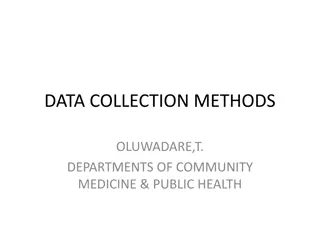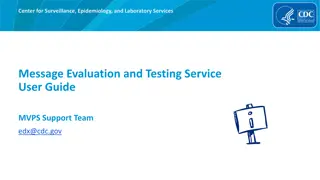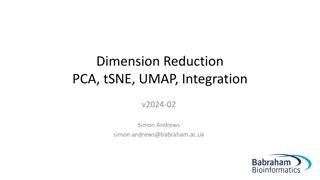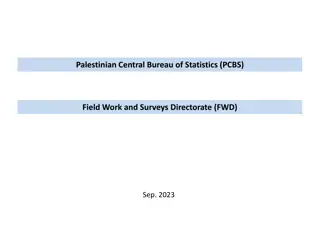Understanding Data Collection Techniques in Epidemiology
Explore the world of data collection techniques in epidemiology with Prof. Ashry Gad Mohamed from the College of Medicine. Learn about various methods, biases, ethical considerations, and the importance of combining different techniques for accurate research outcomes.
Download Presentation

Please find below an Image/Link to download the presentation.
The content on the website is provided AS IS for your information and personal use only. It may not be sold, licensed, or shared on other websites without obtaining consent from the author. Download presentation by click this link. If you encounter any issues during the download, it is possible that the publisher has removed the file from their server.
E N D
Presentation Transcript
Ashry Gad Mohamed Prof. of Epidemiology College of Medicine, KSU
Session objectives At the end of this session you should be able to: Describe various data collection techniques and state their uses and limitations. Advantageously use a combination of different data collection techniques. Identify various sources of bias in data collection and ways of preventing bias. Identify ethical issues involved in the implementation of research and ways of ensuring that your research informants or subjects are not harmed by your study.
Lecture contents Overview of data collection techniques. The importance of combining different data collection techniques . Bias in information collection. Ethical considerations
Overview of data collection techniques. Data-collection techniques are systematically collection of information about study sampling units(people, objects, phenomena) and the study settings . If data are collected haphazardly, it will be difficult to answer research questions in a conclusive way.
Example: During a nutrition survey three different weighing scales were used in three villages. The researchers did not record which scales were used in which village. After completion of the survey it was discovered that the scales were not standardized and indicated different weights when weighing the same child. Can investigators conclude in which village malnutrition was most prevalent?
data collection techniques Using available information 1. 2. Observing 3. Interviewing (face-to-face) 4. Administering written questionnaires 5. Focus group discussions 6. Projective techniques, mapping, scaling
Using available information Usually there is a large amount of data that has already been collected by others. Locating these sources and retrieving the information is a good starting point in any data collection effort. Examples: health information system data, census data, unpublished reports and publications in archives and libraries. Death registry or birth registry.
The use of key informants: knowledgeable community leaders . health staff at various levels. Other sources of available data are newspapers and published case histories, e.g., patients suffering from serious diseases, or their relatives, telling their experiences and how they cope.
In order to retrieve the data from available sources, the researcher will have to design an instrument such as a checklist or compilation sheet. In designing such instruments, it is important to inspect the layout of the source documents from which the data is to be extracted. This will save time and reduce error.
The advantage Collection is inexpensive. Disadvantage it is sometimes difficult to gain access. The data may not always be complete and precise enough, or too disorganized.
2. Observation A technique that involves systematically selecting, watching and recording behavior and characteristics of living beings, objects or phenomena. Observation of human behavior is a common used data collection technique. It can be undertaken in different ways: 1. Participant observation: The observer takes part in the situation he or she observes. (For example, a doctor hospitalized with a broken hip, who now observes hospital procedures from within .) 2. Non-participant observation: The observer watches the situation, openly or concealed, but does not participate.
1. open (e.g., shadowing a health worker with his/her permission during routine activities) 2. concealed (e.g., mystery clients trying to obtain antibiotics without medical prescription). Observations can give additional, more accurate information on behavior of people than interviews or questionnaires. They can also check on the information collected through interviews especially on sensitive topics.
Observations can also be made on objects. For example, the presence or absence of a latrine and its state of cleanliness may be observed. Here observation would be the major research technique. If observations are made using a defined scale they may be called measurements.
3. Interviewing An INTERVIEW is a data-collection technique that involves oral questioning of respondents, either individually or as a group. Answers to the questions posed during an interview can be recorded by writing them down (either during the interview itself or immediately after the interview) or by tape-recording the responses, or by a combination of both. Interviews can be conducted with varying degrees of flexibility.
The two extremes, high and low degree of flexibility are described below: 1. High degree of flexibility: The unstructured or loosely structured method of asking questions can be used for interviewing individuals as well as groups of key informants. (For details concerning focus group discussions (FGDs). 2. Low degree of flexibility: Less flexible methods of interviewing are useful when the researcher is relatively knowledgeable about expected answers or when the number of respondents being interviewed is relatively large e.g. questionnaires.
4. Administering written questionnaires Self-administered questionnaire) is a data collection tool in which written questions are presented that are to be answered by the respondents in written form. 1. Sending questionnaires by mail with clear instructions . 2. Gathering all or part of the respondents in one place at one time, giving oral or written instructions, and letting the respondents fill out the questionnaires. 3. Hand-delivering questionnaires to respondents and collecting them later.
5. Focus group discussions (FGD) A focus group discussion allows a group of 8 - 12 informants to freely discuss a certain subject with the guidance of a facilitator or reporter.
6. Projective techniques When a researcher uses projective techniques, (s)he asks an informant to react to some kind of visual or verbal stimulus. E.g. She/he may ask the informant: Suppose your child suffered from diarrhea, what would you do?
7. Mapping and scaling Mapping is a valuable technique for visually displaying relationships and resources. It gives researchers a good overview of the physical situation and may help to highlight relationships hitherto unrecognized. Mapping a community is also very useful and often indispensable as a pre-stage to sampling.
BIAS IN INFORMATION COLLECTION 1. Defective instruments, such as: Questionnaires with: little is known about the topic. vaguely phrased questions; leading questions that cause the respondent to believe one answer would be preferred over another. questions placed in an illogical order. Weighing scales or other measuring equipment that are not standardized .
2. Observer bias: Observer bias can easily occur when conducting observations or utilizing loosely structured group- or individual interviews. There is a risk that the data collector will only see or hear things in which he is interested or will miss information that is critical to the research.
3. Effect of the interview on the informant. This is a possible factor in all interview situations. The informant may mistrust the intention of the interview and dodge certain questions or give misleading answers.
4. Information bias: Sometimes the information itself has weaknesses. Medical records may have many blanks or be unreadable. Another common information bias is due to gaps in people s memory; this is called memory or recall bias.
Determine DV & IV Stage 3 Duration of symptoms in months Stage 2 Stage 1 Total < 3 2 3 10 15 4-6 8 5 6 19 7-10 20 18 1 39 11-12 26 23 5 54
Study examining if t.v. violence increases aggression in children. IV: tv violence DV: children's aggression
Study predicting that alcohol drinking will decrease people's reaction time while driving.
IV: alcohol drinking DV: people's reaction time while driving
Study examining if perspective taking improves with age. .
IV: age DV: perspective taking
IV: high school sports DV: character
. How do changes in work space affect employee reaction? .
IV: changes in work space DV: employee reaction
Study predicting that pedestrians will walk faster on hot days versus cold days.
IV: temperature (hot vs. cold) DV: tempo of pedestrian walking
Are younger siblings treated better by their parents than older siblings? .
IV: Sibling status (younger/older) DV: treatment by parents
For the following examples, identify The dependent variable The independent variable The experimental condition(s)/experimental group(s) The control condition/control group
A researcher is studying the effect of sleep on aggression, thinking that less sleep will lead to more aggression. She has some people sleep 6 hours per night, some people sleep 3 hours per night and some people sleep as much as they want. She then monitors aggressive behavior during basketball games among participants.
A researcher is curious to find out what effect classical music has on people s level of relaxation (as measured by heart rate). He suspects that listening to classical music will make people feel more calm and relaxed. He lets one group listen to classical music for one hour. He lets another group sit in a quiet room for one hour (i.e they hear no music). After one hour, he monitors the heart rate of each participant to measure their level of relaxation.
A researcher conducts an experiment to assess the effects of alcohol on people's sense of balance. He divides his subjects into three groups: in one group the participants drink one ounce of alcohol, in another they drink two ounces of alcohol and in a third group the participants drink soda. He then watches as each participant tries to walk on a straight line from one corner of the room to the next and notes how many times they stumble outside the line.


